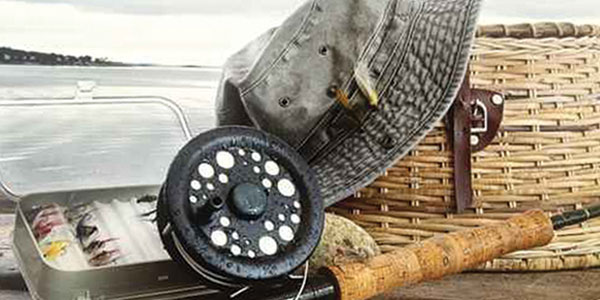 |
 Jan Christopher Porinchak is a middle school art teacher, Scientific Illustrator, and Cornell Cooperative Certified Master Naturalist. He holds level 1 archery coaching certification through USA Archery. Contact Jan for archery instruction, illustration work, and for educational natural history hikes for your youth group at NatureWorks, Jan’s work can be viewed at: natureworks-illustration.com he can be reached at beachtowel1@optimum.net. |
| Trout season is here! Whether you are a novice fisherman, or an experienced angler, trout fishing provides fishing excitement. Long Island offers numerous opportunities to match wits with three species of trout. These are the Brown Trout, Rainbow Trout, and Brook Trout. The first two are introduced species. The Brown Trout is a European import, while the Rainbow Trout is from western North America. The Brook Trout is our native species. While all three are stocked in our lakes, ponds, and streams, there are also naturally reproducing populations of Brook Trout on Long Island. Each of these species are uniquely beautiful in coloration. If you’re a beginner looking to try fishing for the first time, or a parent who wants to introduce your children to this sport, trout fishing is best approached using bait. Early season trout that are recently stocked are usually very cooperative and easier to catch. Use a spinning rod, with light line such as 6lb monofilament. Small hooks such as a # 6 are suitable. There are many styles of floats, aka “bobbers” which suspend the bait in the water and allow the fisherman to detect a bite. I recommend the round, weighted, styrofoam type as these can be casted further than the hollow plastic variety. Suitable baits include “trout worms” which are a type of small, lively earthworm. Also excellent are waxworms, or mealworms. These can be purchased at tackle shops or pet stores. You can also use commercially prepared trout baits such as “power bait” which are a dough like product, which is brightly colored and scented to attract fish. This type of product is perfect for children who might be averse to handling live bait. If you desire more of a challenge, fishing with lures can provide great sport! Small “spinners” and small “spoon” style lures are the go to choice for trout. Spinners have twirling blades and often fur or feathers as an additional fish attractor. Spoons are a simple yet effective lure which flutter enticingly in the water. Gold is an excellent color choice, as are pink and chartruse. For those looking to take the sport to the next level, fly fishing is the method which requires the most practice and commitment. The fly rod is long and supple, and a weighted line and specific casting techniques are used to deliver small “flies” to wary trout. These flies are made of natural materials such as fur and feathers, and are designed to mimic tiny insects that trout favor. Many fisherman produce their own flies based on specific patterns with fanciful names such as “wooly bugger” and “royal coachman” in an effort to “match the hatch” of aquatic insects that the trout are feasting on. Although fly fishing is the ultimate fishing challenge, it can be the most rewarding. Our state parks offer lessons on the fly fishing technique for those who want to try their hand at this special outdoor experience. If you’ve been thinking of giving fishing a try – now’s the time to get out and wet a line. Feeling the tug of a feisty trout on the end of your line is a thrill that’s hard to match! |
|












 20 lucky winners will win $500 each in prizes totaling $10,000.
20 lucky winners will win $500 each in prizes totaling $10,000. 